Since PlayStation VR launched in 2016, many developers have taken to virtual reality, creating a wide variety of gaming experiences aimed at taking the medium further. Between the PlayStation 4 and PlayStation 5, all kinds of games have pushed the limits of immersion and how we can feel more involved in what we’re playing. After several years, we’ve experienced many truly innovative games that either would not be possible without VR, or are significantly enhanced by the technology. These games come in many different forms, including high-octane racers, clever platformers and puzzle games, and thrilling action-adventures. To help you find the ultimate PSVR experience, we’ve alphabetically listed the best PlayStation VR games on PS4 and PS5 available right now.
PS5 owners, make sure to grab an adapter so you can connect the PSVR-compatible PS4 camera to the new console. If you don’t already own a PSVR, new headsets are hard to come by for reasonable prices, but you can get a refurbished model at GameStop for $150. You’ll have to purchase the camera separately for $50, too. Optional controllers like the PlayStation Move and Aim Controller can enhance your experience in certain games as well. Sony is currently developing a new PSVR headset, but it’s not expected to release anytime soon.
After reading this list, check out our guides to the 25 best PS4 games of all time and the best PS5 games so far.
With the whimsical fun of Astro Bot Rescue Mission, this PlayStation exclusive just happens to be one of the strongest VR games across any platform. A 3D platformer oozing charm at every corner, you assume an omnipotent role helping guide the titular character through beautifully designed levels–all from a third-person perspective controlled by your PSVR headset. Astro Bot Rescue Mission cleverly integrates the DualShock 4 with VR to open up nifty platforming possibilities, such as tilting both the controller and your head to guide the robotic companion through precarious pathways, and swiping the touchpad to throw shuriken at would-be attackers. It’s the sort of game you show VR-skeptics to demonstrate how both the change of perspective and intuitive controls refreshes an otherwise familiar genre in dazzling ways. Astro Bot Rescue Mission is easily one of the best PSVR games, and it paved the way for the brilliant PS5 pack-in title Astro’s Playroom.
Before Batman: Arkham VR, cosplay was the closest we could get to literally seeing the world from Bruce Wayne’s perspective. While it’s not an overly long experience, Batman: Arkham VR offers the rare opportunity to don the Batsuit and actually become Batman–something that should appeal to anyone with even the most cursory interest in the famous comic book character. Through the PSVR, you can get a firsthand glimpse at the Dark Knight’s Batcave hideout and the hulking Batmobile, all the while throwing Batarangs using the PlayStation Move controllers. In this Batman instalment, sleuthing is your prime agenda, getting to go hands-on with various gadgets and investigate crime in the dark streets of Gotham. It doesn’t matter if your allegiance lies with Marvel or DC, because Batman: Arkham VR is a giddying power fantasy for all superhero fans.
See our Batman: Arkham VR review.
Some VR games offer sedentary, slower-paced experiences to enjoy, while others are active endeavors, requiring you to engage both mind and body in equal measure. Beat Saber is the epitome of the latter category, being a highly immersive rhythm-based game infused with hard-hitting dance beats. Armed with PlayStation Move controllers transformed into beam swords via the magic of VR, you slice blocks zooming towards your head in time with the music, ducking and weaving away from obstacles along the way. It’s a great workout as the intensity lifts exponentially on higher difficulties, multiplying the number and speed of incoming projectiles as you wildly flail your arms in an effort to keep up. Mastering each song conjures a satisfying zen-like state where nothing outside of the PSVR headset matters. Beat Saber’s ongoing free updates and paid licensed DLC–including music from Linkin Park, BTS, and Timbaland–offers plenty of replayability, too.
See our Beat Saber review.
Blood and Truth let’s you live out your London mobster dreams in VR, using clever motion-based controls that see you in the thick of all sorts of thrilling shootouts. The PlayStation Move controllers do a good job of making actions like reloading a gun, handling larger weapons, and picking locks feel responsive and natural despite the fact you’re essentially holding a pair of glowing wands. Although story-wise, you won’t find the next Guy Ritchie sensation within Blood and Truth, its physically immersive gameplay more than makes up for any narrative shortcomings. We’ve all wanted to feel like we’re in a blockbuster action film but without the inherent danger of hanging out the window of a moving car while being shot at–and you can do just that here in the safety of your living room. For that, Blood and Truth is one of our favorites.
See our Blood and Truth review.
After a lean period for the demon-slaying shooter series, 2016’s Doom reboot was an overwhelming success. Featuring brutal combat at a lightning-quick pace, accompanied by an equally hard-hitting metal soundtrack, Doom perfectly captured everything we all love about the series. Following the 2016 revival, Doom VFR launched to bring the bloodletting action to VR. If you thought ripping and tearing through unholy monstrosities was full-on, just wait until you do it in VR–all that’s missing is actual blood spraying over you while you play. At its best when using the PlayStation VR Aim Controller, Doom VFR is a thrilling adaptation of the action the series is widely beloved for. As an added extra for hardcore Doom fans, Doom VFR also includes the ability to play through retro maps, a cool way to incorporate VR for nostalgia hunters.
See our Doom VFR review.
A first-person adventure game for ornithologists and animal lovers alike, Falcon Age is a game that takes on another level of tactile interactivity when played in VR. As you fight back against robots that have colonized the planet you inhabit, a gorgeous falcon serves as a loyal companion. In addition to the falcon aiding as a hunting buddy, you can also bond with them in various ways, including dressing them up in cute little outfits–plus you can fist-bump and handshake (talonshake?) your falcon as they perch upon your hand. The PSVR’s Move Controllers make for a natural way to connect with your avian buddy and the surrounding world, making VR the definitive way to play Falcon Age. Another neat feature is Falcon Age’s Imprint Mode, removing the stress of combat for those who just want to hang out with a cool bird without the threat of enemies interfering.
See our Falcon Age review.
Serving as the showcase for the PlayStation VR Aim Controller, Farpoint demonstrates how strongly the quirky-looking peripheral performs as an input method for FPS games. Made with the Aim Controller in mind, Farpoint gives you plenty of opportunities to test your shooting mettle, as the game does a remarkable job of generating the sensation of wielding two-handed weapons against an array of sci-fi foes. Even better, you can team up with a friend in online co-op and see their VR actions recreated in-game. If nothing else, Farpoint is worth experiencing with the Aim Controller for experiencing how accurate it is in replicating your movements and aim, making it one of the early formative PSVR games and laying the foundation for others to follow.
See our Farpoint review.
Where Farpoint offers a solid single-player or co-op FPS VR experience, Firewall: Zero Hour is a tactical team-based shooter that makes for one of the stronger VR competitive multiplayer games. Similar to the likes of Tom Clancy’s Rainbow Six Siege, Firewall: Zero Hour has you picking from playable contractors who have their own unique skills to make use of during game modes such as the four-versus-four Contract, where teams alternate between attacking and defending an objective. Again, the PlayStation VR Aim Controller is an excellent way to play what is a more methodical shooting experience alongside the faster-paced PSVR entries. There’s something tangibly satisfying about being able to interact with a 3D environment and have your actions accurately replicated in-game that’s only possible in VR. If you’ve got a bunch of friends with PSVR headsets, squadding up in Firewall: Zero Hour is a strong contender for multiplayer sessions.
Agent 47’s latest assassination caper, Hitman 3, is one of his best for various reasons– allowing you to play the entire World of Assassination Trilogy using a PSVR headset is a significant one. IO Interactive’s Hitman games have a strong reputation for dropping you into richly populated sandboxes of deadly machinations, offering the flexibility to take out targets any way you can muster. They also generate plenty of gallows humor due to Agent 47’s murderous double entendre quips and the occasional slapstick methods of carrying out assassinations, which is further exacerbated via VR. Hitman 3’s story is particularly excellent in how it captures the vibe and grandiose espionage action of the best spy movies. This extends to the many stunning locales included, such as the spectacular sky-piercing Dubai tower, and the neon-infused Chongqing–all of which make for eye-popping VR vistas. Hitman 3 is brilliant however you play it.
See our Hitman 3 review.
A riff on the famous Goldfinger quote when James Bond is at the mercy of a deadly laser, I Expect You To Die is a VR game solely dedicated to those moments in spy films where the hero escapes from a perilous situation with seconds to spare. In the early days of VR, many games struggled to enact a control scheme that felt both natural to use, and made sense in the context of the game. Best played while seated, I Expect You To Die cleverly navigates this dilemma through its setting: each precarious scenario you escape from anchors you to the one spot, which makes perfect sense when you’re trapped in a vehicle filling up with lethal gas, or stuck in a malfunctioning escape pod. I Expect You To Die’s highly interactive VR world instils a childlike sense of joy–even after the bomb blows up for the third time in a row.
See our I Expect You To Die review.
A prequel to Supermassive Games’ hit dramatic horror Until Dawn, The Inpatient is another clever, spooky addition to the PSVR library. You play as an amnesiac attempting to reclaim their memories within the creepy confines of the Blackwood Sanatorium, piecing together the mysteries surrounding you. The Inpatient differentiates itself from other VR horror games by not resorting to cheap jump-scares, instead flexing its brilliant visuals to build an atmospheric sense of foreboding. It also features voice recognition, a novel method of interacting with other characters and giving you another element of role-playing. Like Until Dawn, The Inpatient is all about interactive storytelling, meaning there’s a degree of replayability to enjoy as you seek to attain different endings. As a refreshingly different approach to horror for the platform, The Inpatient is worth checking out on PSVR.
See our The Inpatient review.
Job Simulator encapsulates the joy of VR slapstick comedy, placing you in highly exaggerated mundane scenarios such as working as a chef or white collar worker, and letting you behave in a destructive manner that would likely see you fired in real life. In Job Simulator, robots have replaced all the jobs previously performed by humans, so a museum exists to “simulate” the act of doing a job. It’s exactly as silly as it sounds–in the best possible way–letting you pick up all manner of items using the PlayStation Move controllers, and manipulate them in goofy ways. Whether it be throwing office supplies around an office with reckless abandon or covering pizzas with grotesque toppings, Job Simulator’s physical humor is heightened through PSVR letting your imagination run wild.
On the surface, VR seems a strange fit for platformers, but Moss is an example of several platforming games that make such clever use of the technology, you wonder if it would be possible without it. Similar to Astro Bot Rescue Mission, Moss has you assume the role of a magical observer guiding Quill the adorable mouse through various puzzles and challenges on her journey. A glowing endorsement for the VR platform, Moss is simultaneously emotionally engaging and fun to play, and adds a nice representation touch in the form of Quill communicating with you via sign language. Each design element is wonderfully crafted, giving you every excuse to look around and soak in the storybook surroundings Moss introduces. And once you’ve played this delightful adventure, a sequel–Moss: Book II–is on the way, as announced at a recent State of Play presentation.
We’ve all heard the remarkable redemption story of No Man’s Sky by now: an ambitious game that missed the mark upon its 2016 release, redeemed by significant post-launch content updates. In 2019, a 2.0 update dropped entitled “Beyond”, adding all sorts of new features, most notably full VR support. No Man’s Sky has always been a feast for the eyes; adding VR added yet another layer to enjoy the sumptuous intergalactic visuals. Combine PSVR compatibility with expanded multiplayer support, in-depth base building, and a reworked story, there are plenty of reasons to explore the unknown either once more or for the first time. Whether you’re traversing an unexplored planet on foot or launching your shuttle into the stars, playing No Man’s Sky with a PSVR headset is an absolute thrill.
See our No Man’s Sky Beyond review.
Pistol Whip is pure VR eye candy with a singular mission: to make you feel like an action hero. It’s a rhythm-based game with guns, designed to make you feel extremely cool while shooting baddies. Scored by an intense soundtrack, Pistol Whip is an on-rails shooter where your main objective is to shoot enemies to the music’s beat. It also happens to trick you into doing a workout, as you’ll be dodging and squatting out of harm’s way as you progress through the game’s colorful, strobing environments. We all know we don’t look anywhere near as cool in real life when playing a VR game like Pistol Whip, but it doesn’t matter, because it superbly tricks us into thinking we’re cool. And that’s all one can really ask for. Time to strap the PSVR on, play Pistol Whip, and feel like we’re in The Matrix.
Resident Evil 7:Biohazard is widely considered a triumphant return to form for the long-running horror series. Many previous entries in the series used either a fixed camera or third-person perspective, a reason why Resident Evil 7: Biohazard’s first-person view was considered such a subversive move. This also enabled PSVR support, making for a truly terrifying experience. As if the horrors encountered by protagonist Ethan Winters weren’t unsettling enough, seeing them in VR cranks the tension up another level, especially when hiding from the utterly deranged Jack Baker. There’s a gripping story and countless frightening reveals throughout, making the seventh main Resident Evil game a compelling one for horror enthusiasts. Needless to say, if you want a high caliber VR experience capable of delivering scares aplenty, Resident Evil 7: Biohazard is where it’s at.
It’s always wonderful to see a treasured game revisited and expanded for a new platform, opening up many new possibilities to fall in love with it all over again. Rez, a classic from the Dreamcast and PlayStation 2 era, received a reworking and VR compatibility in the form of Rez Infinite. A kaleidoscope of color and sound, Rez Infinite is a musically-charged on-rails shooter where you battle against viruses corrupting an artificial intelligence. What makes Rez Infinite such a great fit for VR is how it immerses you into its surreal world. By moving your PSVR-wearing head, you aim and lock onto targets as they swirl around your Silver Surfer-like avatar. The perfect clash of music and abstract visuals translates exceptionally well into VR as Rez Infinite breathes new life into what has proven to be a timeless game.
From German development studio Crytek, known for the acclaimed Crysis series, Robinson: The Journey follows Robin as he attempts to survive being stranded after crash landing on a planet populated with dinosaurs. Along with an AI companion, Robin also happens to befriend a baby T-Rex, which is as cool as game companions get. Robinson: The Journey is packed with awe-inspiring vistas at every turn, and is especially impressive when seeing dinosaurs up close. A significant part of traversing the dinosaur-filled planet involves climbing, where you control each hand individually, and are able to look around independently through the PSVR headset from spectacular heights. As is to be expected from a developer of Crytek’s pedigree, Robinson: The Journey is packed with technical and visual details, making it an intriguing VR adventure.
Note: Robinson: The Journey is only playable on PS4.
See our Robinson: The Journey review.
A continuation of The Room series of puzzle games (not the Tommy Wiseau movie), The Room VR: A Dark Matter is an excellent example of how to transition the puzzle genre into VR. Here, you navigate The British Institute of Archeology following a police investigation into a missing Egyptologist, while exploring and uncovering mysteries along the way. The Room series has built a reputation for containing deep, multi-layered puzzles highlighted by a strong sense of tactility. VR pushes these interactions further, as you can seamlessly explore every nook and cranny in a way not possible without the immersive technology. As with many of the best PSVR games, The Room VR houses plenty of items you can grab and interact with, making each environment you visit feel real, rewarding your curiosity. This is an essential purchase for any PSVR owner looking for a highly engaging puzzler to get you thinking.
Harkening back to the classic X-Wing and TIE Fighter flight sims, Star Wars Squadrons is a thrilling space combat game, replete with VR support. Getting into the cockpit of famous Star Wars spacecraft is an absolute dream come true, with each ship lovingly rendered in immaculate detail, right down to the unique heads-up displays and bespoke controls. In telling a new story separate from the films, you won’t be able to recreate the Death Star trench run, but that doesn’t make what’s on offer any less thrilling. With a PSVR headset on, being able to look over your shoulder and see a TIE Interceptor in hot pursuit increases the tension along with the strong sound design, making the action feel tangibly real. Highly polished and imbued with the franchise’s soul, Star Wars Squadrons is an excellent dogfighter for PSVR owners.
See our Star Wars Squadrons review.
The original Superhot gained popularity due to its stylized polygonal visuals in addition to its killer concept: an FPS where time only moves when you move. As the title suggests, Superhot VR is the adaptation of the time-bending game into VR. Although seemingly a natural fit, Superhot VR was made from the ground up to ensure it translated perfectly to the VR format. Where Superhot VR excels is in its ability to make you feel like an action hero, like you have all the time in the world to take down waves of enemies. In the space of a few seconds, you’ll have emptied a gun’s clip into someone, thrown the empty weapon at another, and then punched a third foe in the face. Improvisation is the ultimate weapon when playing Superhot VR, where you can live out your John Wick fantasies using a PSVR.
So many versions of Tetris exist, so it can be tricky to figure out which one is worth playing. Let us simplify the equation for you: Tetris Effect is one of the best iterations of the puzzle phenomenon of all time. More than just a puzzle game, Tetris Effect is a connector to rhythm, culture, and community all in one–it’s something akin to a spiritual experience. How each of the play environments transform with each tetromino drop, adding to the eclectic mix of music from around the world, is astoundingly beautiful. Remarkably, Tetris Effect is a non-conventional VR experience, in that it doesn’t require anything in the way of your motion, but it instead serves as a way of blocking out the rest of the world while you immerse yourself in flow. It’s stunning and mesmerizing: Tetris Effect is a PSVR must-play.
See our Tetris Effect review.
VR lends itself to an assortment of rhythm-based games, but there are none quite like Thumper. Billed as “rhythm violence”, Thumper lives up to its bold claim with pounding percussive beats as your bug-like character hurtles on rails towards a monstrous figure in the distance. An unconventional rhythm-based game, Thumper is less about playing along to music, and more about reacting to the musical “attacks” launched your way. Whether this comes in the form of obstacles to sway around, or spikes to leap over, it all happens while Thumper’s beats slam through your speakers. With PSVR, it commands your attention due to the breakneck speed of each level, and the visual assault of the colors and lights lining the way. Like Tetris Effect, Thumper in VR removes your peripheral vision in order to fixate on the awesome cacophony of action, and is made all the better for it.
See our Thumper review.
Social deduction gaming has exploded recently following the overwhelming success of games like Among Us. These types of experiences have existed in-person for years in various forms, including the popular tabletop variations of Werewolf, which Werewolves Within brings to PSVR. Playable with up to eight people, Werewolves Within assigns a specific role to each player, ranging from villagers with different abilities to the werewolves attempting to take over the town. It’s up to you to discuss with others in order to try and achieve your unique win state, which usually involves some form of deception. Through the use of PSVR, everyone playing Werewolves Within is represented by an avatar whose body language is guided by your actions, which is a nifty way of approaching social gaming. Tabletop gamers and anyone who loves a good social deduction game will definitely want to check out Werewolves Within on PSVR.
See our Werewolves Within review.
Last but definitely not least, Wipeout Omega Collection is one of the best racing experiences in VR, on any platform. It’s fast, looks stunning, and has plenty of content to play. With PSVR, Wipeout Omega Collection places you in the cockpit of a speedy futuristic vehicle, giving you a previously-unmatched perspective into the sheer speed of the series. Of course, you can still play from a third-person perspective, but if you’re going to use VR, the cockpit view is essential for the full experience. Every bump, twist and turn is felt tenfold as you blaze through the slick courses. One can’t also mention Wipeout without paying tribute to its beat-laden soundtrack perfect for amping up the adrenaline. With how much stuff Wipeout Omega Collection packs in, it’s incredible value and worthy of being considered a top-tier PSVR game.
See our Wipeout Omega Collection review (written prior to its free VR update).

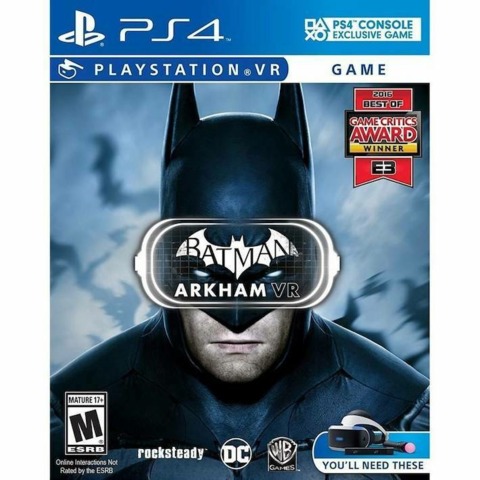





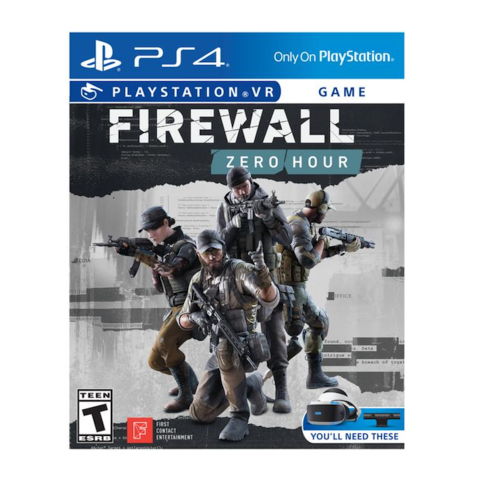


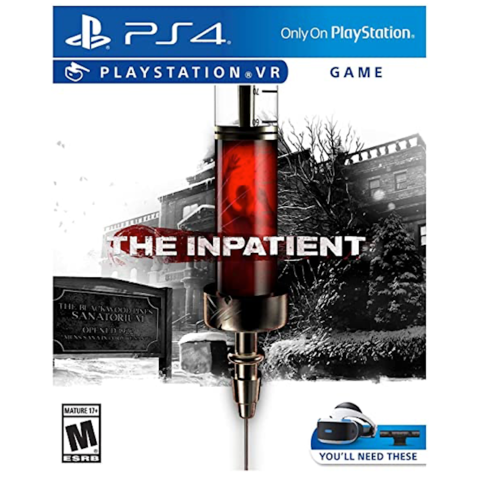
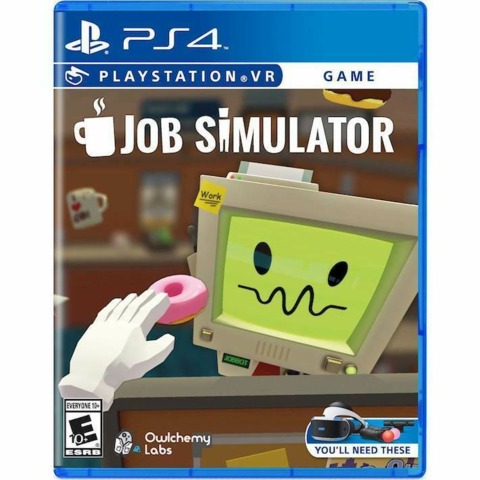
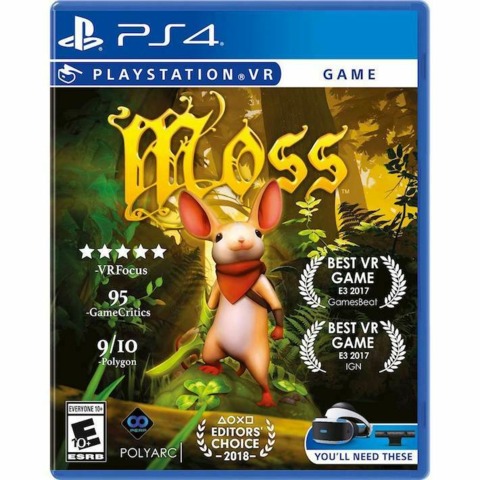
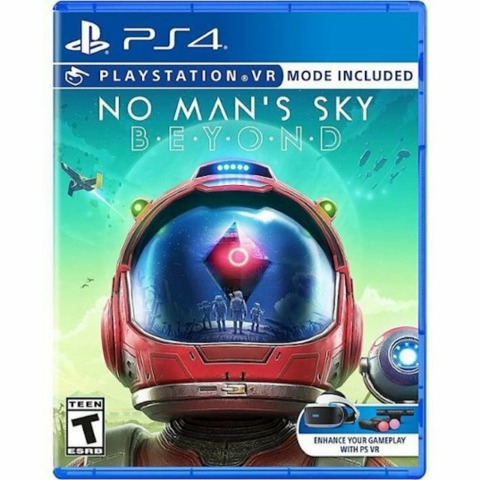


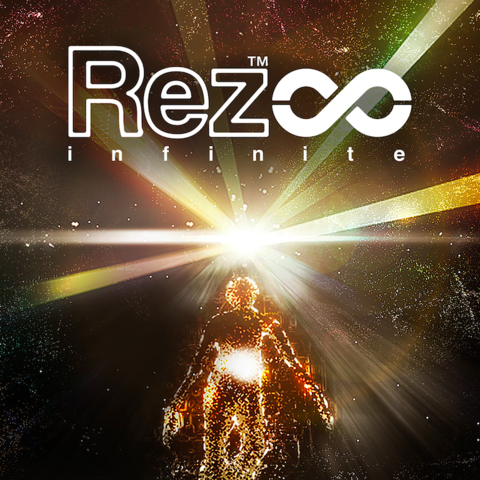






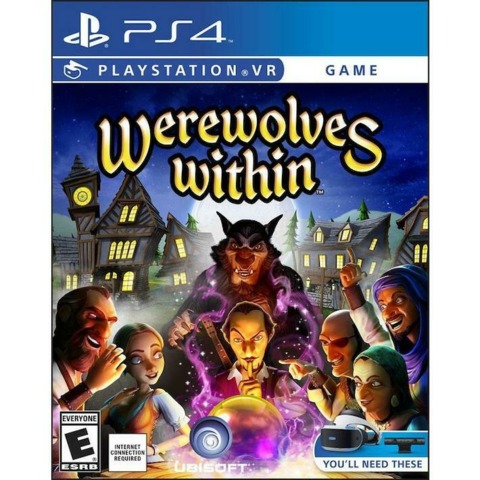

Be the first to comment